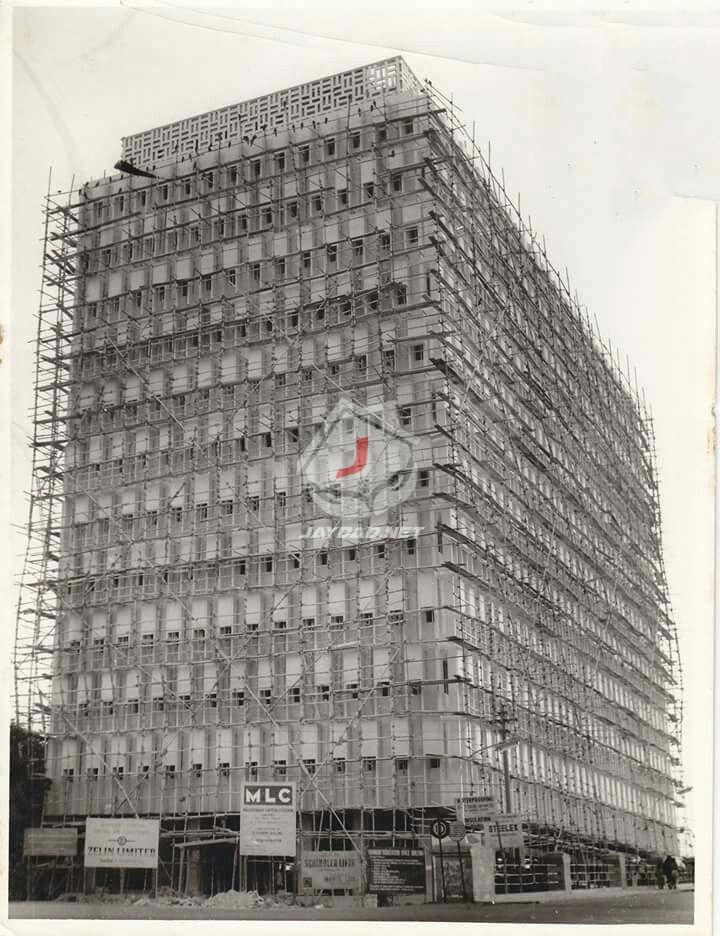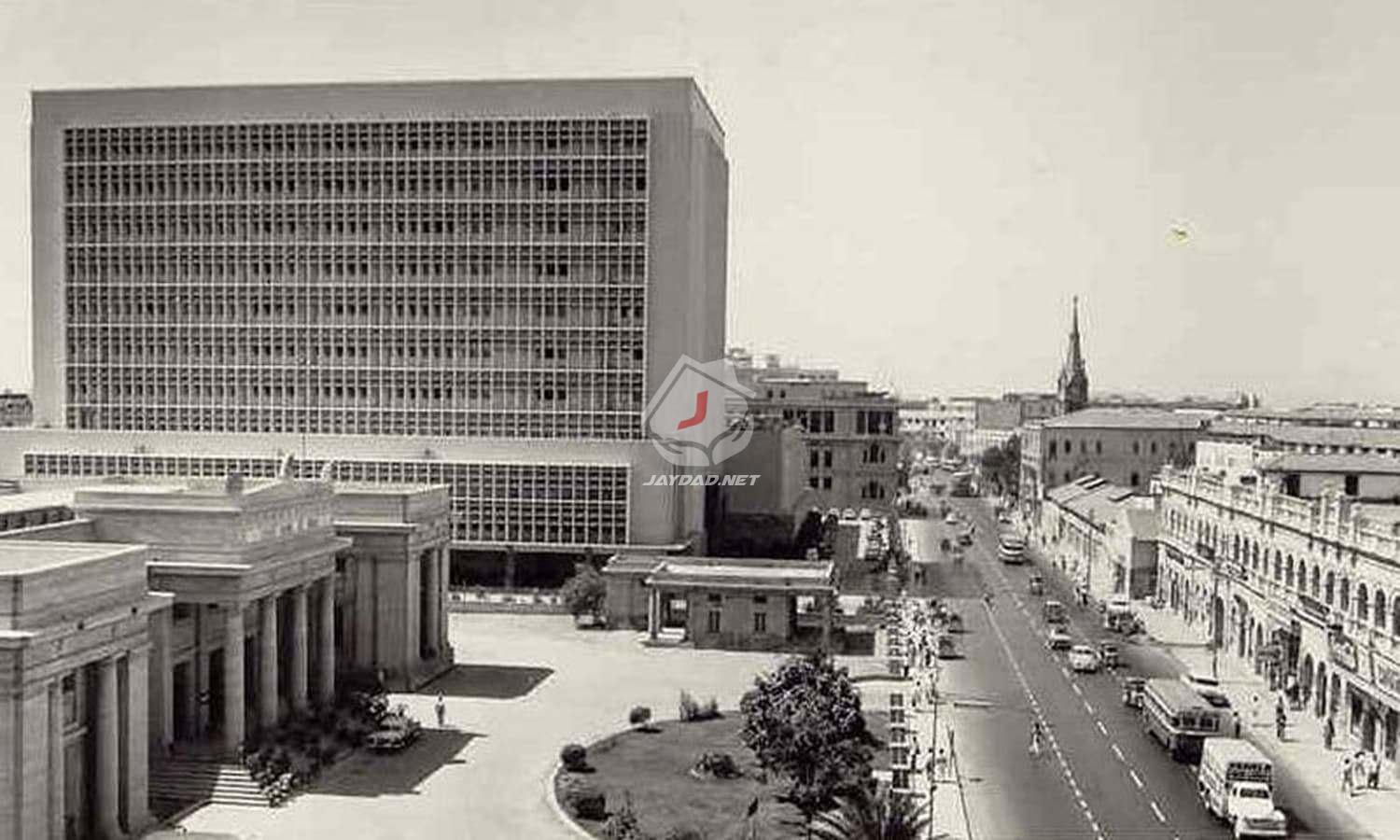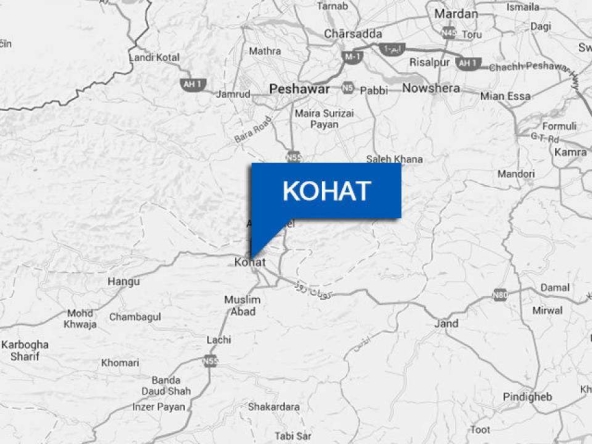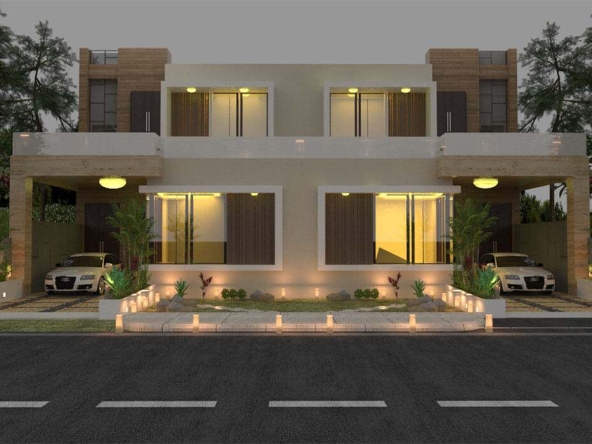![]()
History of Pakistan real estate
Sitting on the balcony of your home, on the off chance of being mildly nostalgic, you might have wondered someday where exactly did all these housing schemes come from? How far do they go back in the history of this territorially unique country? And which city was the first one to ever welcome the vintage look-alikes of DHA and Bahria?Well the answers, as I’ve come to know them, paint a picture of beautiful sentimentality if you happen to possess a genealogical mind, that is, the one obsessed with the origin and the historical development of things.

Dawood Centre, 1960, Karachi.
The Start
Karachi was the first-ever city of Pakistan that was proven to be the forefather of the first few estate projects at the time when only a handful of agencies were operational in Old Karachi, somewhere along the then Bandar (Port) Road, and only two financiers, or barons if I am to be precise, were seen engaged in the construction business, which was majorly run by the set-up that involved the hiring of the local labor on daily wages.

McLeod Road in 1962
The 1950s-1960s
Being a port city, the growth of population was always a question of when rather than how, which is exactly why back in the days residential areas such as Sindhi Muslim Society, PECHS, Nursery, and Tariq Road started to become dense in the 1950s. Defense Housing Authority (DHA), as we happened to know them today, came into existence in the late 1950s, and the earliest years of the next decade saw folks taking a zealous interest in the plots as the rates, by the standards of those times, were quite reasonable.
The allotment of the lands/plots for the sake of cultivation, or other farming activities, happened in mere rupees, and the complete selling out along with the completion of land registry process happened for the now-hysterical amount of few hundreds, a vintage fun fact good enough to force a chuckle on your face.
Not after long, people from contrasting backgrounds, toiling in one of the finest continental port cities, had begun to take desperate notice of all the perquisites and the exclusive rights held and enjoyed by such community dwellers, resulting in a moderate rural-to-urban translocation, the effects of which were seen in Karachi becoming increasingly stacked as the days went by.
In the pursuit of the primal grandparent of the modern real estate market, we have to stop at Karachi’s South district as that’s where it all began, the idea in its raw and original form, executed in the fashion resonant with the architectural aura of that time and place.
The 1970s
The market experienced a sense of vast reputability around the city during 1970-77, as the year 1973-74 is reminiscent of the Amnesty scheme introduced by Zulfiqar Ali Bhutto, which also proved to be the hallmark of increased investments. The tragedy of floods in DHA and the post-election rioting tumbled the graph considerably, which marked the beginning of decline.
The 1980s
The plummet in the industry remained consistent until 1982, the year in which the military regime of Zia began to strengthen itself, which also marked the start of a recovery time for the real estate market. The decade itself is significant for the Afghan war that brought a huge sum of financial and moral support from all over the globe, an initiative welcomed with open arms by all of Pakistan. The incident of Zia’s death left huge scars on the political landscape of the country, which was bound to entangle the real estate market as well, and so it happened.
The 1990s
From 1992 to 1994, the market began to move more slowly, but the overall situation stayed below average. From 1994 to 1997, the real estate market took off again, and in the last four years, the real estate industry has seen substantial changes. The market crashed in 1997 due to heavy storms and a power outage, as from 1997 to September 2001, the stock market was in a slump.
The 2000s
After the terrorist attacks of Sept 11, 2001, Pakistan’s real estate market exploded, and the market’s recovery following the 9/11 terrorist attacks shattered all previous highs. The rise of the real estate sector has taken the concept of home ownership further away from the average Pakistani while many legitimate buyers were unable to buy homes in the early 2000s due to large price increases.
In 2005, the market was knocked out by the second recession, which lasted until June of 2010. The fundamental cause of the recession, according to analysts, was the sky-high house prices. Since July 2010, the market has been delicately mending, and in 2012, the mending process experienced a surge, which lasted until November 2015. Overpricing was once again the cause of the recession, and after a brief dip in November 2015, the market has risen to new highs, breaking records set in the previous 8,9 years.

Construction Site, Karachi, 2000
Finance Bill 2001
The federal government authorized an update to Finance Bill 2001 on June 7, 2016, and this alteration was made available to the public on June 28th through ads in various publications. Short-term investors and others affiliated with this domain howled with delight at this development. The outrage was sparked by the government’s announcement that property market rates will be regularized in the nearest term in accordance with DC-approved rates.
Let’s see how efficient the government is at bringing unregistered, undocumented, and untaxed investments into the national economy. Professionals want to know what the favorable and unfavorable effects of these efforts will be on the real estate market.
Regardless of the fact that these figures only pertain to a small proportion of Karachi’s real estate sector, it is a historical truth that Pakistan’s real estate market originated in this city and evolved into a professional industry over time.







